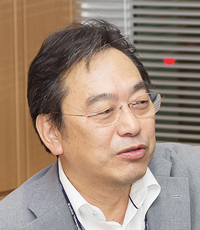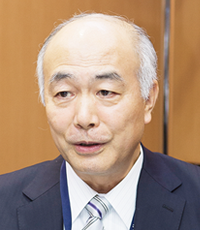XNUMX. About "University Admission Applicant Academic Ability Evaluation Test" (tentative name)
First of all, I am relieved that it will be implemented in earnest from the students who studied under the next course of study.It is irrelevant to evaluate and select based on things that are not taught in high school (not only "knowledge / skills" but also "thinking / judgment / expressiveness"), and the current education is too much. I think I'm neglecting it.
The realization of the descriptive problem is questionable.Our school's regular test in Japanese is mostly descriptive, so teachers desperately create questions and score desperately after the exam.And I think that I can improve my strength by continuing this for XNUMX years.But at least I don't think this level of writing problems can be done so easily.It takes a lot of time to score, and it is doubtful that a huge number of answers can be scored based on the same criteria.As a result, it can only be a very low-level question and cannot be a question of academic ability.In addition, it is said that you will create a question for which the answer is not fixed, you will be able to set and select a wide range of difficulty levels, and you will perform multiple times to equalize the evaluation. Is it possible?Furthermore, it seems unreasonable to present the percentile value to the university in a multi-step display for the examinees.
Before reforming the entrance examination system, I would like to fundamentally review the overall way of education.In addition, the university will enhance its admission office.
Principal Akira Yoshino (Ohyu Gakuen Girls' High School)
This is a story that Tetsuo Shimizu, the managing director of our school and the director of the Tokyo Private School Education Research Institute, taught us as a conversation with his best friend, a professor at the Faculty of Medicine, Kyoto University. "Recently, students entering the medical school may get points, but they have no idea what they came to or what they want to do. What are they educating in high school?" "No, we have this kind of education at our school." "I want such students to come." "Then, I wonder if we can get more and more students from our house." "I hope you get a point."
The last part is a joke, but I think that reforms that open a hole in such a structure are about to take place.The movement of high school connection reform and the direction of the curriculum guidelines can be seen as the return of the trend from subject-centered to child-centered.Of course, in the background, there are major changes in politics, economy, and society on a global scale that began around 1990, and the goal is to foster the ability to create a new world together in a world where diverse values coexist.It is natural from the perspective of the world that education in Japan must change significantly, and it must be said that it was too late.
However, the entrance examinations and educational reforms that are about to take place do not seem possible at the national level or at the high school / university level in terms of financial and human resources.It is impossible to introduce active learning while keeping the subject-centered curriculum guidelines and teacher training system as they are.There should be a lot of work to be done in the field, such as what to do with the evaluation at each school and how to utilize that evaluation in high school connections.The reason why the International Baccalaureate 200 School Plan has not progressed easily may be that the curriculum guidelines and the subject-centered principle of the teacher training system are the bottleneck.I hope that without a fundamental overhaul of education as a whole, and without financial backing, we will not be able to keep up with the movements of the world and not become a hasty and superficial institutional reform.
For children who have to propose and act independently while interacting with different people, what kind of world will be created in a world that is changing drastically. In order to develop the ability to respond with confidence, it may be necessary to take the time to hold fundamental discussions, including the structure of Japanese society.
Recently, the Ministry of Education, Culture, Sports, Science and Technology has announced the direction of implementation in rapid succession, and each university has begun to materialize the reform of the entrance examination system.And the media reports only follow those moving parts and barely touch on the problems and the direction of education that should be.Such reports only cause confusion and anxiety for parents, and high school teachers can reduce their upset as to how they can avoid the transitional disadvantages of their children. I am enthusiastic about it.
What I expect from Kyoto University is not only superficial university institutional reforms and admissions reforms, but also educational reforms that convey the future of Japan and the role that education should play on a university-wide scale. I want you to lead.Furthermore, at high school connections, we would like you to secure human resources who can firmly judge the comprehensive strength of each examinee.At every university, budgets are being cut down and "restructuring" seems to be progressing, but in order to really realize what the Ministry of Education is trying to do, people will definitely be cut off. I would like you to express that there is no such thing, and to involve other universities, or even the entire nation, to work on enhancing the admission office.



